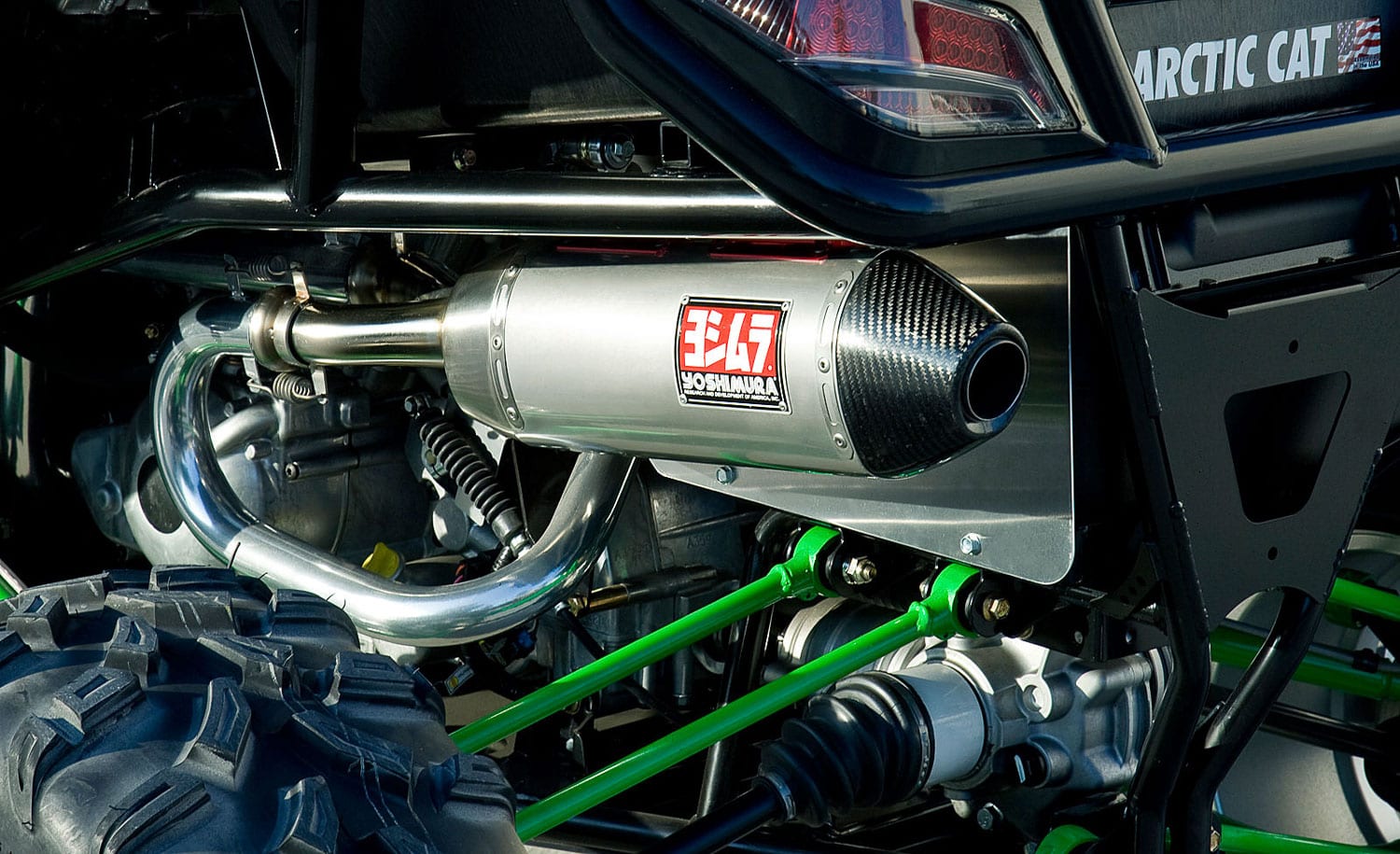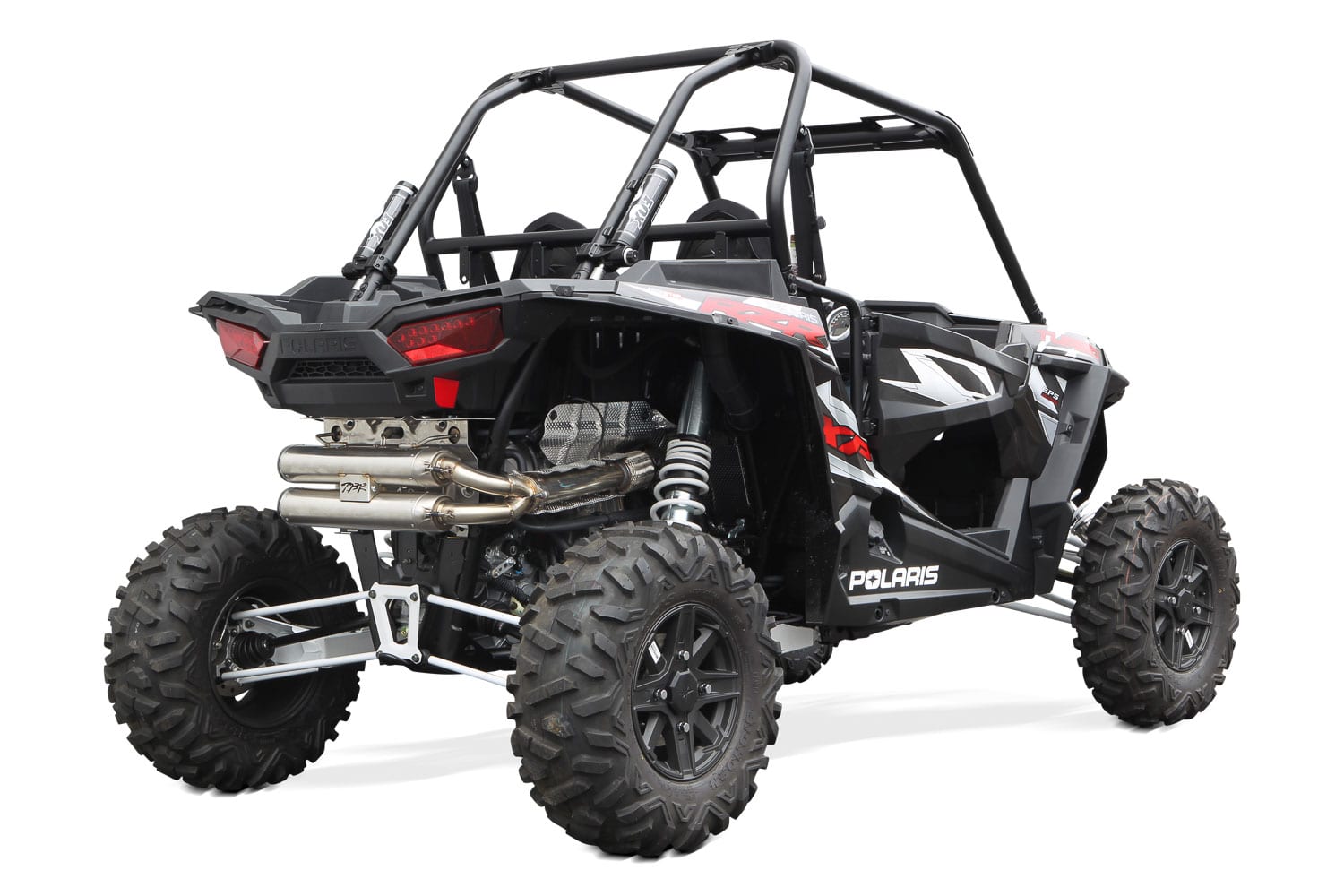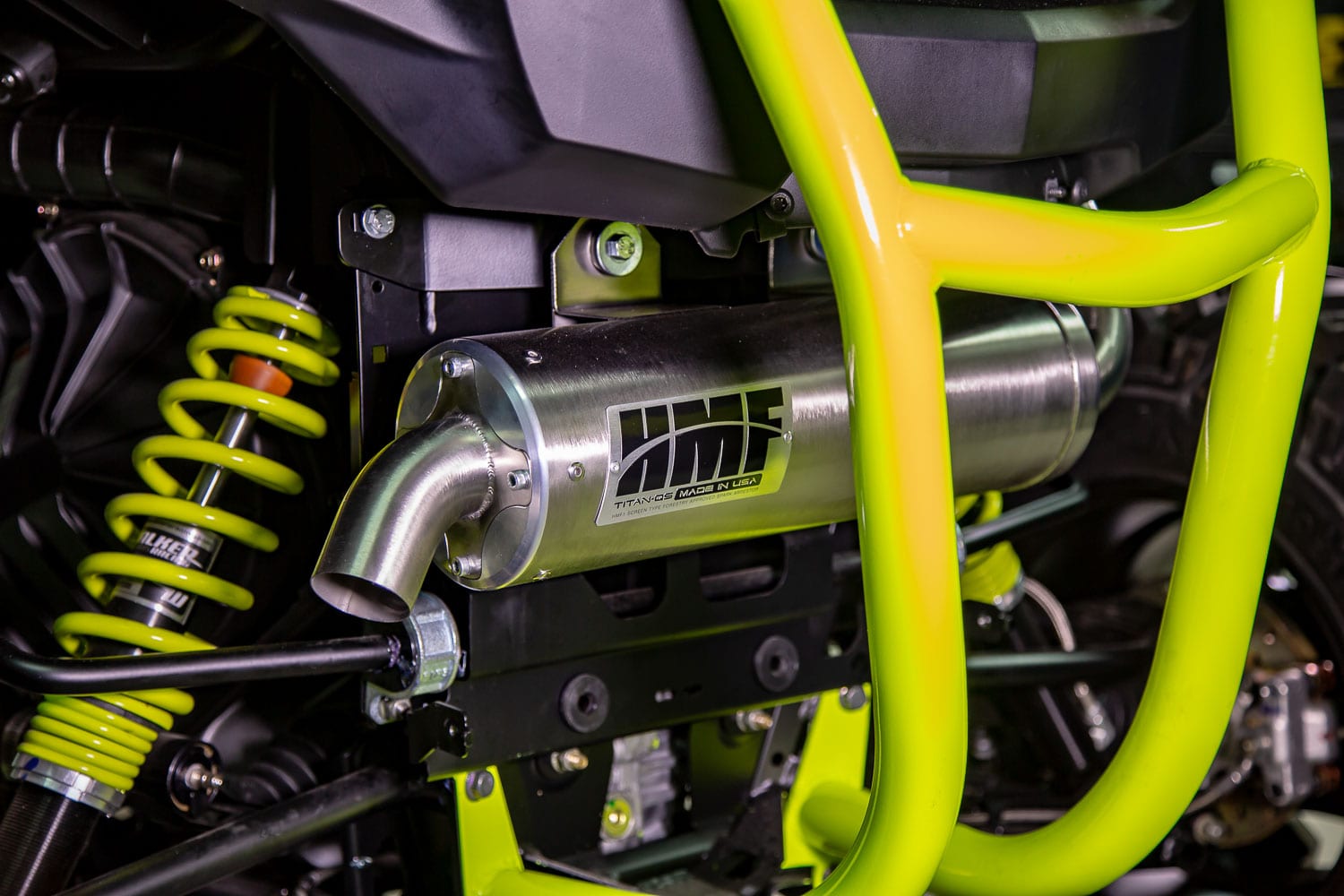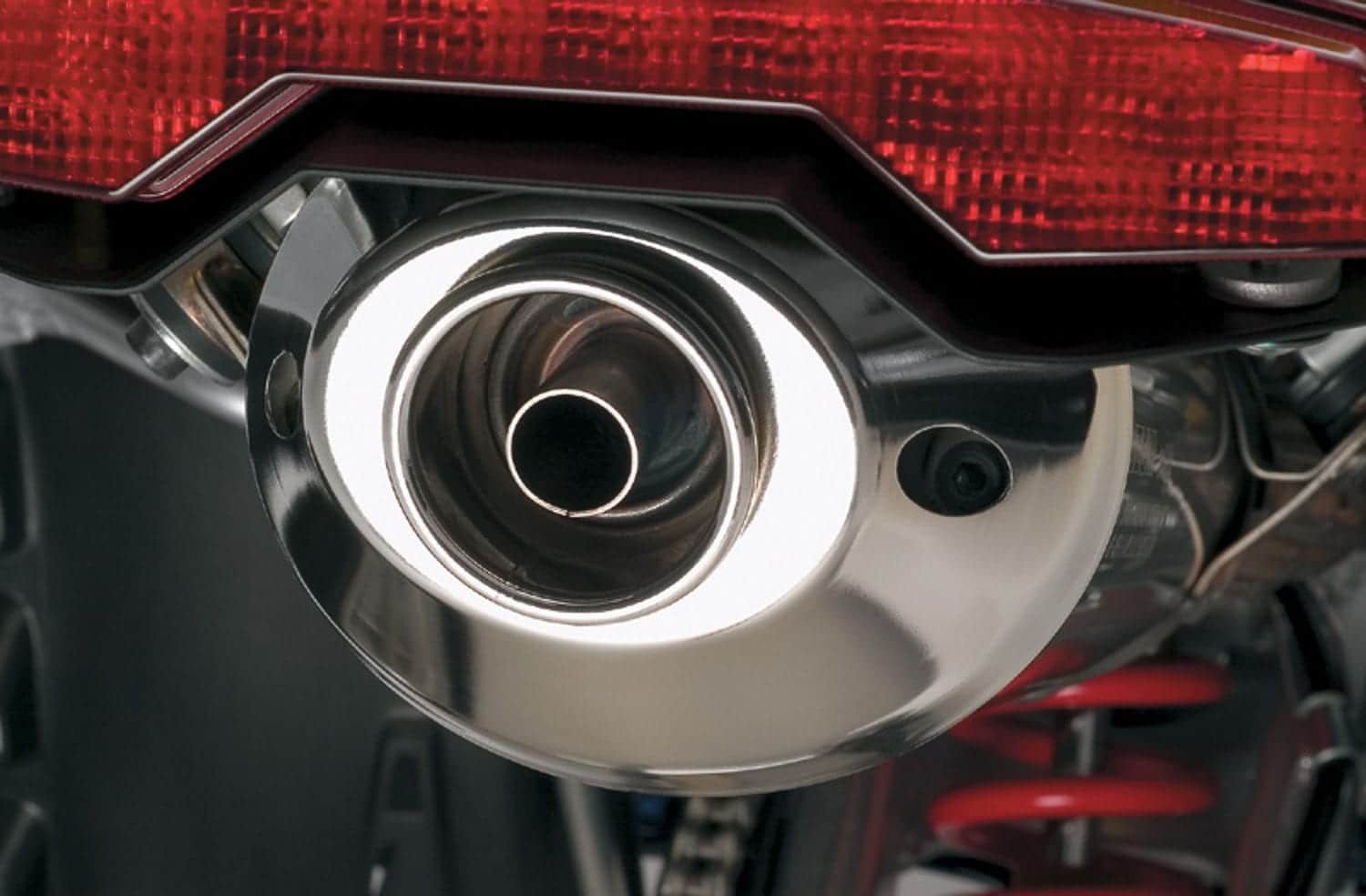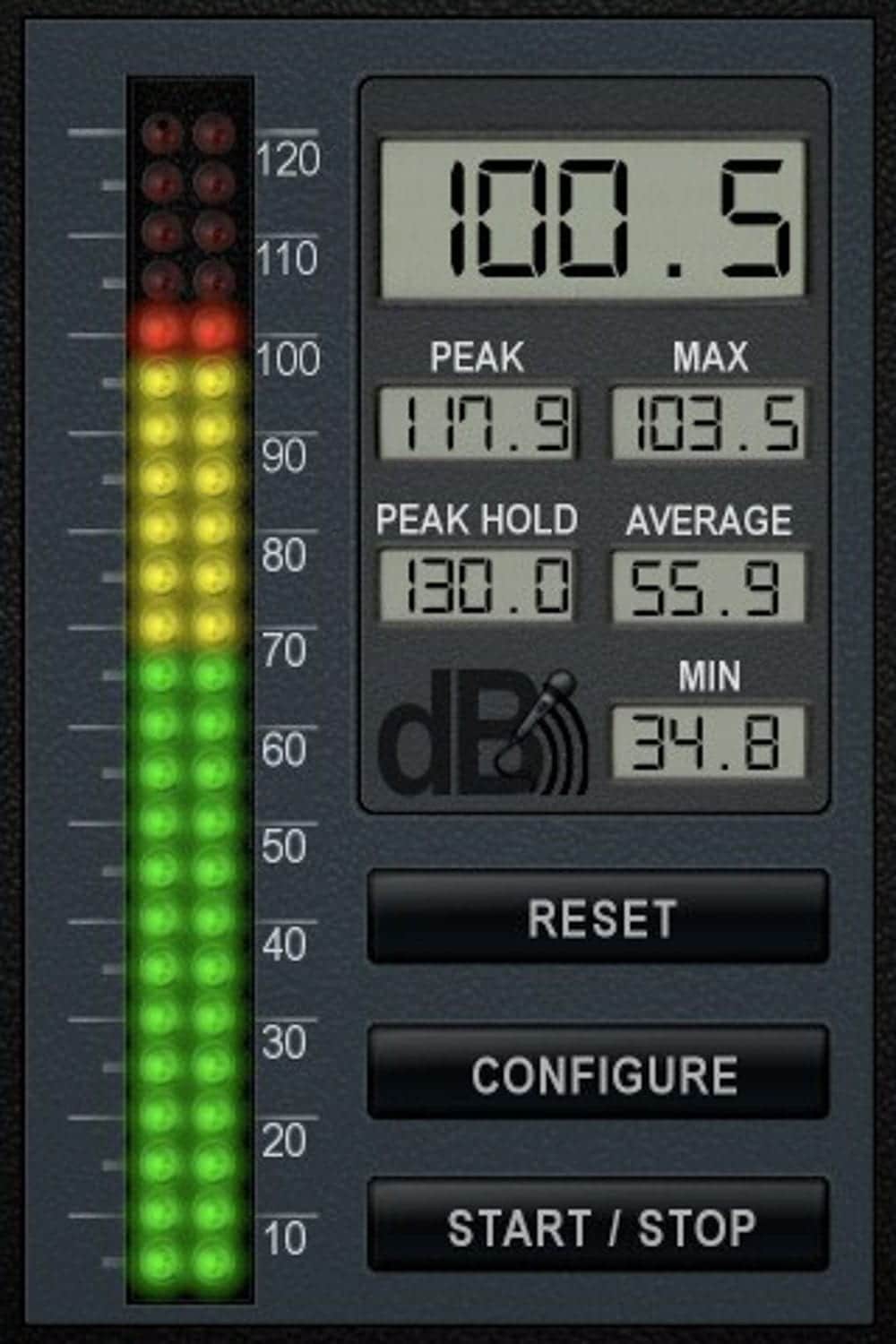While browsing the many ATV forums on the web, I am always sad to read the posts mentioning loss of rights of way, removed because of the environmental nuisance caused by the passage of an off-road vehicle (ORV). These rights of way are removed by individuals on their private lots or by municipalities on sections of public roads. At first, I have a thought for the ORV club volunteers who will have to work hard to repair the damages and deploy treasure of persuasion to recover the lost sections when possible. Secondly, I cannot help thinking about the mechanics that work against us in urbanized areas. This is an obvious problem and it is the main reason why ATVs and UTVs cannot access services in urbanized areas or near homes.
I have already addressed the off-road vehicles noise problem that prevents them to cohabit with other citizens. Roughly speaking, I had exposed the fact that of all motorized recreational vehicles on earth, ORVs are among the noisiest. They have since been joined by off-trail snowmobiles that scream happily in the woods, and near the cities. On top of that, the ORV manufacturers are looking for the best performance at the best cost possible, so they do not show a high priority to muffle their creations. In other words, this problem is basically not a problem for the manufacturers, as they simply have to comply with Transport Canada standards.
Legal, social and judicial environment:
Before speaking technical, it is important to understand the three-level societal environment that hinders the presence of the ORV in an organized environment.
Legal context
The first level is the legal context, that is to say, the regulation that exists in a situation of noise in the case that interests us. In Quebec, the Civil Code expressly regulates, through section 976, the disadvantages of excessive noise on the neighborhood.
Art 976. Neighbors shall suffer the normal neighborhood annoyances that are not beyond the limit of tolerance they owe each other, according to the nature or location of their land or local usage.
The annoyances refer to the sounds and smells they can expect based on the type of zoning of their property: agricultural, residential or otherwise. The legal debate has long focused on the normal disadvantages of the neighborhood and the notion of responsibility according to the Civil Code, with or without fault. To make a short story, in 2004, the residents bordering an ORV trail had obtained a judgment from the Superior Court of Quebec prohibiting the movement of ORVs on the disused railway line. This is called the Langlois judgment. This judgment also awarded compensation to residents located within 100 m of the trail. The government then appealed the judgment, seeking to show that the blamed liability should be at fault, that is, the negligence of ORV trail operators. In 2008, a judgment from the Supreme Court of Canada in the Ciment St-Laurent case in Beauport closed the debate for good. It ruled that even though Ciment St-Laurent was not negligent in its day-to-day operations, it was responsible for the environmental nuisances in its neighborhood. In other words, it is a no-fault responsibility and the mere presence of a trail that harms residents. This decision of the highest court of the country strengthened the Langlois judgment and wiped out the defense of the government, which decided to withdraw its appeal. The scope of this case law is now understood: it brings considerable leverage to the protest groups. This will obviously push back municipalities that will not want to be caught in a legal maelstrom just for a “four-wheeler trail”.
Social context
I will tell you that the level of individual tolerance is at its lowest point in history in Quebec. All social projects are subject to be challenged by a small group or another. In short, as the colorful Quebec City mayor Labeaume once pointed out, Quebec is run by small groups that each pull in their ideological direction. Since all these directions are contradictory, the resulting sum of those forces is about equal to zero, so nothing moves nearly at all. Basically, everyone wants development in Quebec, but nobody wants to have any inconvenience in his environment. We want wind turbines because it is close to ecological perfection, but nobody wants them in their visual field. “Not in my back yard (NIMBY).”
In the bucolic lands of the Quebec countryside, many newcomers arrive from the big city to take a well-deserved peaceful retirement after a hectic working life. Accustomed to urban noise, they do not know the sounds of ORVs that disturb the tranquility they had imagined. Many decide to take the necessary steps to stop these unexpected irritants. Many NIMBY are professionals who have the financial means, who are organized, who have all the skills to lead a fight and above all, are determined to carry it out. Such fighters, armed with the judgments mentioned above, are formidable war machines that can do serious damage to the web of organized ORV trails in Quebec.
Judicial context
Once the files are put on the rails of the judicial machine, it is unlikely that the people who will be dealing with these cases, namely the magistrates, are much in favor of the ORV case. Yet it is the latter who will decide the fate of the cases discussed before them.
This is what gives a picture of the current legal situation of environmental nuisances in Quebec.
What are the noise problems with ORVs?
As a first step, it should be understood that Transport Canada standards apply only to vehicles intended to run on public roads. So, the ATVs, snowmobiles, UTVs and motocross of this world are not affected by the requirements of the federal standard 1106 on noise emissions. For comparison, automobiles are required by the federal standard to emit a maximum noise of 80dB and motorcycles are allowed 82dB. For the ORVs, the standard that seems to be common in North America is 96dB. It is to this standard that the manufacturers submit and from their point of view, as long as this spec is respected there is no problem. Knowing this, we easily understand that an ATV is a lot more disturbing than a car, or even a motorcycle with the compliant exhausts.
This situation is of real concern to a host of Quebec organizations such as the Quebec Federation of Off-Road Motorcycles (FQMHR) and the Quebec Federation of Snowmobile Clubs (FCMQ), the Quebec Quad Club Federation (FQCQ) as well as other organizations from all over North America. These organizations consider that noise nuisance is a very serious threat that jeopardizes the operation of the trail systems as we know them in Quebec right now. They want governments at various levels to tighten regulations in order to force the manufacturers to muzzle their creatures. The technology exists – many motorcycles are muffled – but it is restrictive. It is essential that the manufacturers become aware of the fact that the general population is reluctant with the acceptance of the coexistence of the ORVs because of the excessive noise they make. The survival of organized ORV activities in organized territories is at stake.
What can I do?
At first, being aware that an ORV is very noisy, drive your machine with respect around the houses. Avoid high engine reving, speed up slowly, and moderate your speed.
Secondly, do not let another rider behave like crazy in populated areas. Just one of those bad drivers will destroy the impression left by 50 respectful riders. Make other riders aware of the need to respect the neighborhood.
Thirdly, we must improve the image of the ORV by the social involvement of the ORV clubs in the community, publicizing good moves that relate to the region. It is necessary that the favorable opinion of the majority of the population counterbalances the NIMBY.
Fourthly, the complaints of the population should not be left hanging and should be answered as soon as possible by the best ambassadors available.
Finally, there are auxiliary silencers on the market that can be easily installed in series with the original exhaust system. They greatly improve the machine’s noise level.
You are now able to appreciate the overall situation of the noise problem in all areas of the ORV activities. Local interventions and the courteous behavior of the users may mitigate the inconveniences but will not make them disappear. In the medium term, governments will need to legislate to establish an acceptable standard for ORVs. In the meantime, we are starting to see manufacturers who understand that customers want quieter machines. Think of the new Yamaha Wolverine and CFMoto, which offers an optional auxiliary silencer for its ATVs. As for others, they always seem obsessed with producing faster and faster ORVs to crash them faster into the wall of sound …
What is a decibel?
Basically, 1dB is the minimum limit of human hearing and 120dB is the limit of pain. Here is a rating scale of sound levels:
130 dB: jet aircraft taking off from a distance of 25m
120 dB: thunderclap nearby
110 dB: train passing nearby
100 dB: typical rock concert
90 dB: heavy traffic noise
80 dB: busy street, meeting room
70 dB: inside a running train
60 dB: current conversation
50 dB: normal apartment
40 dB: quiet outside, countryside
30 dB: apartment in a quiet area
20 dB: very quiet exterior
10 dB: recording studio
0 dB: audibility threshold


